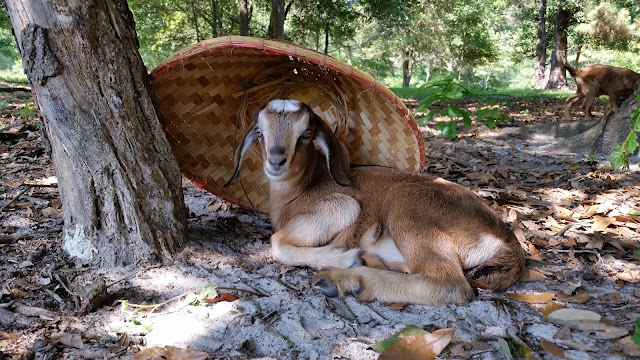 |
| June Bug's twins - Oberon and Cobweb |
 |
| Mustardseed curled up under my hat! |
 |
| Firefly's twins - Puck and Peaseblossom |
On Sunday we came out and found that Cricket also had kidded. We weren't sure exactly when she was due, because we saw her bred twice, so it was a surprise....and also another surprise because she had twins! That makes nine baby goats in all this year - three sets of twins and three single babies.
The oldest kids - Mab and Titania - are old enough to be very frisky and tear around. The other newer babies will join in for awhile, and then curl up for a nap. Mab was in a tree yesterday. It's a live oak with rough bark that she can find footholds in. We tried to get a picture, but when she saw us she jumped down and raced away, pronking. They are so spastic at her age. They bounce around and then stop, as if they were surprised at what they have just done.
This week is full to the brim of milking twice a day, so I will probably not be writing here much. I will try to post another French recipe later this week.































